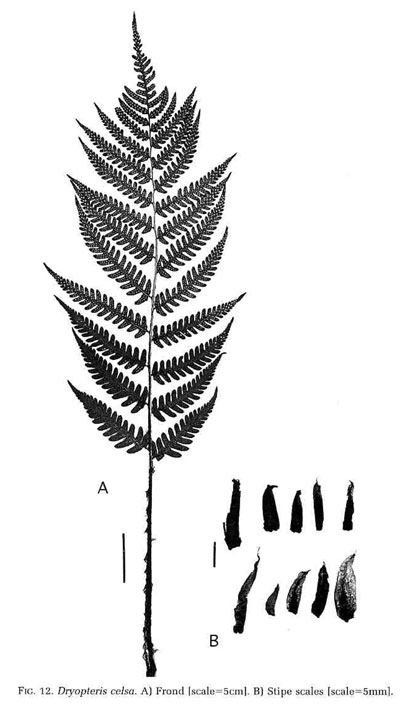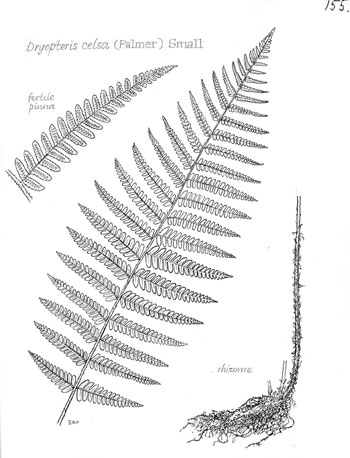| Dryopteris celsa | ||
Log fern | ||
|
Etymology
Celsa means: high, lofty, tall, prominent, erect, raised, elevated. Take your pick.
Description
Rhizome: short-creeping.
Frond: 120 cm high by 30 cm wide, deciduous, monomorphic, blade/stipe ratio: 2:1. Stipe: grooved, scaly at least at base; scales scattered, dark brown or tan with dark central stripe, vascular bundles: 3-7 in a c-shaped pattern. Blade: 1-pinnate-pinnatifid, ovate-lanceolate, gradually tapering to tip, herbaceous, linear to ovate scales below, absent above. Pinnae: 15 to 20 pair, anadromous on the basal pinnae; basal pinnae linear-oblong, much reduced; costae grooved above, continuous from rachis to costae; margins margins crenately toothed; veins free, forked. Sori: round, in 1 row between midrib and margin, indusium: reniform, at a sinus, sporangia: brownish. Culture
Habitat: seepage slopes, hammocks and logs in swamps.
Distribution: eastern, southeastern United States.
Hardy to -25�C, USDA Zone 5.
Synonyms
Dryopteris goldiana (Hooker ex Goldie) A. Gray subsp. celsa W. Palmer |
|
|
Notes
Parents Dryopteris celsa is a fertile hybrid between D. goldiana and D. ludoviciana.
Parents Dryopteris celsa is a fertile hybrid between D. goldiana and D. ludoviciana.

Dryopteris celsa. �Illustration from The Cultivated Species of the Fern Genus Dryopteris in the United States, Barbara Joe Hoshizaki and Kenneth A. Wilson, American Fern Journal, 89, 1, (1999), with permission. |
